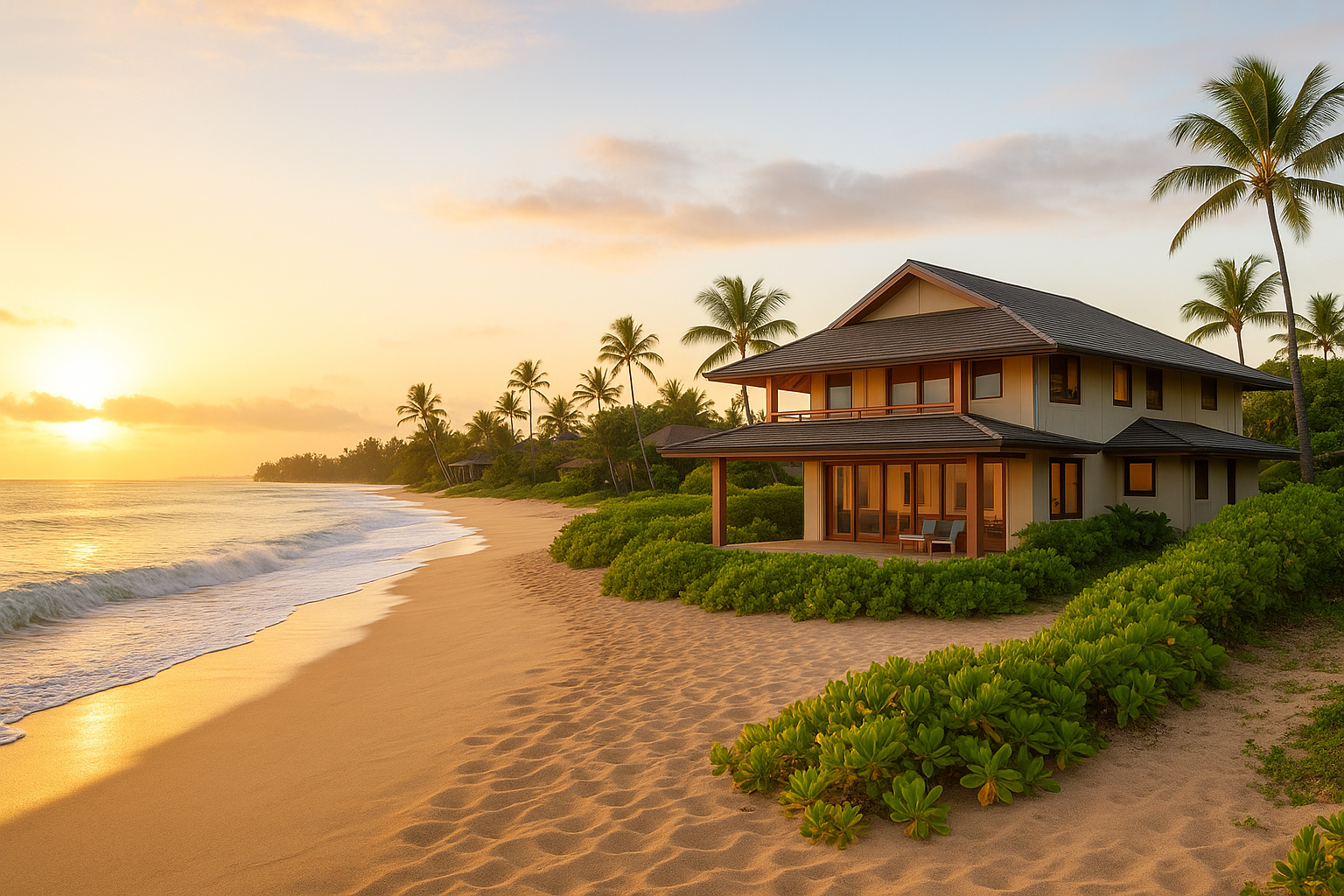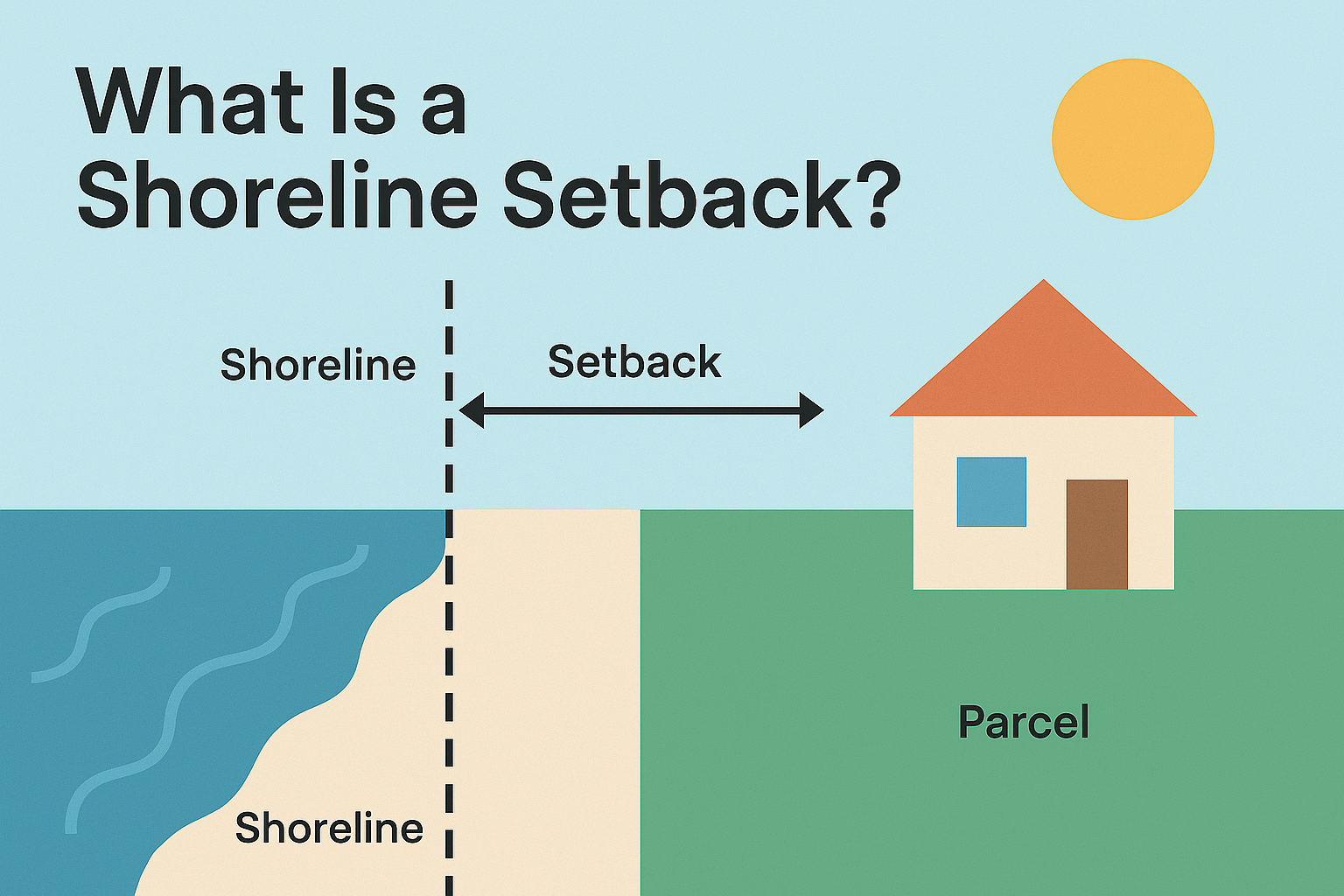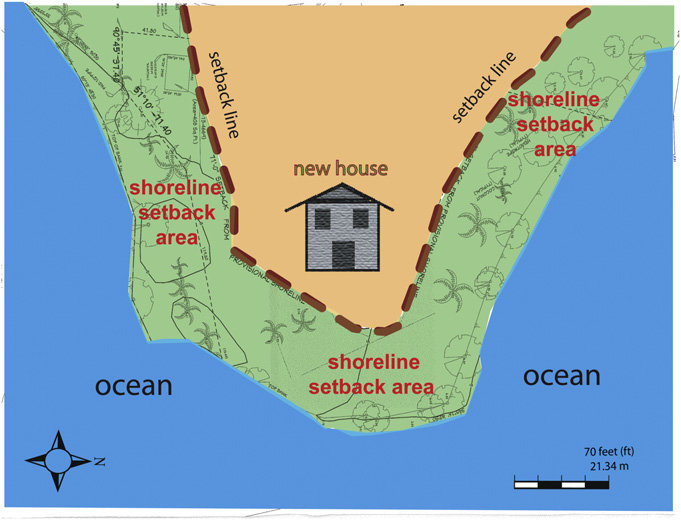Building or Remodeling Near the Ocean? Here’s What Honolulu’s New Shoreline Setback Rules Mean for You

If you’re lucky enough to own property near the ocean in Honolulu, you already know how special it is. There’s nothing like waking up to the sound of the waves, feeling the ocean breeze, and watching the sunset from your lanai. But before you plan that home addition, deck, or dream rebuild, you need to know about a major rule change that affects many coastal homeowners on O‘ahu — the new shoreline setback ordinance.
These updates may impact how close you can build to the water, and in some cases, they can limit renovations or rebuilds on oceanfront lots. The goal is to protect both your home and Hawai‘i’s shorelines from erosion and rising sea levels — but it also means your project may need more careful planning.
Let’s look at what changed, why it matters, and how a local architect can help you navigate it smoothly.
What Is a Shoreline Setback?

A shoreline setback is a buffer zone between your property’s certified shoreline and where you’re allowed to build a home or structure.
In Honolulu, the setback defines the minimum distance your home must sit mauka — meaning toward the mountains, or landward — from the shoreline. If you’re standing on the beach facing the ocean, makai means toward the sea, while mauka means inland.
So when the city says you must build 60 feet mauka of the shoreline, that means your house, deck, or retaining wall has to be at least 60 feet inland from the certified shoreline — the official line verified by the State Department of Land and Natural Resources (DLNR).
This rule exists to:
- Protect homes from erosion and coastal flooding.
- Keep natural beaches and dunes intact.
- Maintain public access and protect the coastal environment.
These setback rules apply to all coastal areas across O‘ahu, including neighborhoods such as Kailua, Waimānalo, Hawai‘i Kai, the North Shore, and other oceanfront communities.
For homeowners who want to learn more, the following official resources provide detailed maps and data on shoreline change and sea level rise:

What Changed Under the New Law?
In 2024, Honolulu passed Ordinance 23-3, which increased the shoreline setback distance in many areas.
Under the new law:
- The minimum setback is now 60 feet from the certified shoreline in most urban Honolulu zones.
- In areas with higher erosion risk, the setback can extend to 100 or even 130 feet.
- The city now uses erosion rate data and sea level rise projections to determine setbacks.
That means the setback line is no longer fixed — it can change based on local shoreline conditions.
If your home is near an eroding coastline or a sandy beach, your lot could now fall partly or entirely within the new setback area.
How Does This Affect Homeowners?
The biggest impact is that you might not be able to build or rebuild in the same footprint as before.
If your current home or deck sits closer to the ocean than the new setback allows, you could face restrictions on:
- Expanding your home seaward
- Rebuilding after major damage
- Adding lanais, pools, or accessory buildings near the shore
Even small renovations, like replacing foundations or enlarging windows facing the ocean, may require special permits or a variance request.
For example:
- A homeowner in Hawai‘i Kai wanting to expand their living room toward the ocean may now need to redesign the layout to stay mauka of the new setback line.
- A couple in Kailua planning to rebuild an older beach cottage may have to move the new structure further inland — or explore raised foundations and alternative layouts.
💡 If you’re also exploring ways to expand your property inland, read our guide on What’s New With ADUs in Honolulu (2025 Ordinance 25-2 Update).
The bottom line: these rules don’t just apply to new construction — they also affect renovations and rebuilds.
Why Did Honolulu Make These Changes?
The new ordinance is part of a long-term effort to adapt to climate change and protect coastal neighborhoods.
Erosion is already a serious issue across O‘ahu — beaches like Sunset, Lanikai, and Waikīkī are slowly disappearing in some areas. When homes are built too close to the shoreline, it can accelerate beach loss and increase property damage during high surf or king tides.
By increasing setbacks, the city hopes to:
- Reduce costly property losses in the future.
- Keep public beaches open and walkable.
- Preserve natural coastal buffers like dunes and vegetation.
It’s a balancing act — protecting homeowners while also preserving the shoreline for future generations.
How to Check If Your Lot Is Affected
If you own or are buying a coastal property on O‘ahu, it’s smart to verify your shoreline setback before starting any design work.
Here’s how:
- Check to see if there is a certified shoreline on file. If there’s no certified shoreline on record — or if the one you have is more than a year old — you’ll need to obtain a new one by working with a licensed land surveyor.
- Use the Honolulu Land Information System (HoLIS) or the city’s online GIS maps to view your parcel.
- Consult with an architect or land surveyor familiar with the new setback calculations.
A licensed architect can overlay the setback line on your site plan and tell you exactly how much buildable area you have left.
What If Your Home Is Already Too Close to the Shore?
If your existing home sits within the new setback area, don’t panic — you can usually maintain it. But there are limits:
- Ordinary repairs are typically allowed.
- Major renovations or rebuilds may require a Special Management Area (SMA) permit or a shoreline variance.
- Variances are only granted when there’s no reasonable alternative and when the project won’t harm the environment or public access.
These applications can be technical and time-consuming, which is why it’s best to work with a professional early in the process.
Why Work With an Architect Who Knows Honolulu’s Coastal Rules

Designing near the ocean in Hawai‘i isn’t just about style — it’s about compliance and safety.
A local architect understands:
- The Department of Planning and Permitting (DPP) approval process.
- How to balance ocean views with flood elevation and setback requirements.
- How to design homes that can withstand salt air, wind, and waves while still feeling open and tropical.
At Home Planning Hawaii, our licensed architects regularly help homeowners design coastal homes that meet today’s stricter rules — without losing the beauty and comfort of island living.
Whether you’re planning a new home, a rebuild, or a renovation on an oceanfront lot, we can help you design smart, stay compliant, and make the process smoother.
Final Thoughts
The new shoreline setback ordinance may feel like a headache at first, but it’s really about building smarter for the future.
As sea levels rise and coastal erosion continues, these rules help ensure your investment — and Hawai‘i’s natural beauty — lasts for generations.
If you’re planning any coastal renovation or rebuild, don’t wait until permit time to discover you’re too close to the water. Get expert help early.
📞 Book a phone consultation today with one of our licensed Honolulu architects. We’ll help you understand your property’s shoreline setback, review your options, and guide you through the design and permitting process — so your dream home stays safe, beautiful, and compliant.
Phone Number
Contact
Opening Hours
Mon - Sat 8:00 - 5:30,
Sunday - Closed
Location
500 Ala Moana Blvd, Suite 7400
Honolulu, HI 96813


